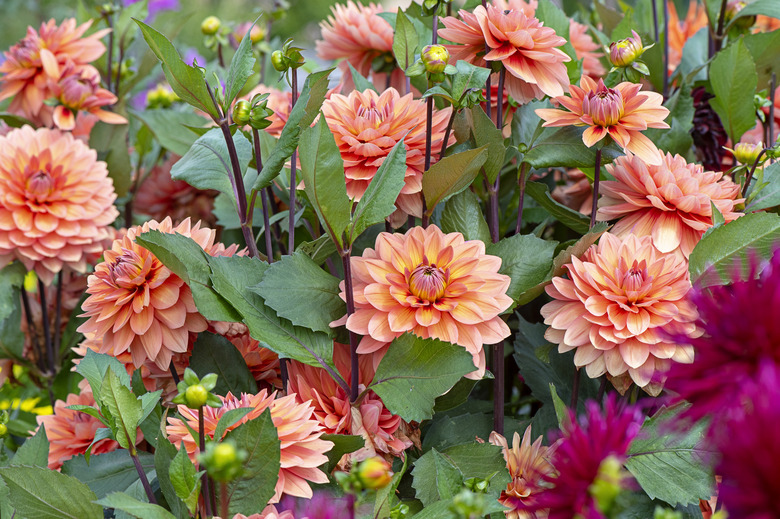What Are The Black Bugs On A Dahlia?
We may receive a commission on purchases made from links.
From midsummer through fall, dazzlingly diverse dahlias (Dahlia spp.) fill gardens with flowers of button to dinner-plate dimensions in every shade but blue and in color combinations too numerous to count. Grown as perennials in U.S. Department of Agriculture plant hardiness zones 7 through 10, they are lifted for winter storage elsewhere. Dahlias often attract two damaging black bugs: black bean aphids and thrips.
Black Bean Aphids and Control
Black Bean Aphids and Control
You may not notice black bean aphids (Aphis fabae) until they mass on your dahlia's new stems and leaves, but they have been hanging around for months. The current generation spent the winter and spring as eggs or wingless females on spindletrees, snowball bushes, or mock orange bushes before a generation of winged females migrated to dahlias and other summer hosts.
Black bean aphids drain sap and excrete the leftovers as gooey, transparent honeydew, which often attracts leaf-blackening sooty mold fungus. The females may give birth to five young each day, most of them also pregnant, and they are capable of reproducing within a week. Even worse, the pests can transmit several viruses, including leaf-mottling dahlia mosaic and cucumber mosaic virus.
At the first sign of an infestation, set your hose spray attachment to jet or strong spray and shower the plant until all the aphids are dislodged. Do this in the early morning so the leaves dry quickly and have less risk of fungal infection. Repeat daily until the aphids are gone. Treat a large aphid population with insecticidal soap, applying it according to package directions but being sure to saturate the infested areas.
Dahlia Thrips and Control
Dahlia Thrips and Control
Tiny black greenhouse thrips (Heliothrips haemorrhoidalis) make a mess of dahlias, distorting and discoloring their flowers and blemishing their leaves with whitish scars and black waste. The pest can also stunt the dahlia's growth. Because thrips tunnel deep into leaves and flowers, it is essential to treat your dahlias as soon as you see the thrips.
You can help control a thrip problem by keeping areas around the dahlias free of weeds and keeping the dahlias healthy by growing them in their preferred conditions. Due to the pests' mobility, they can be hard to control, but in the event of a heavy infestation, you can use a safer product, like insecticidal soap, neem oil, or products containing pyrethrins. Always use them according to the product directions.
